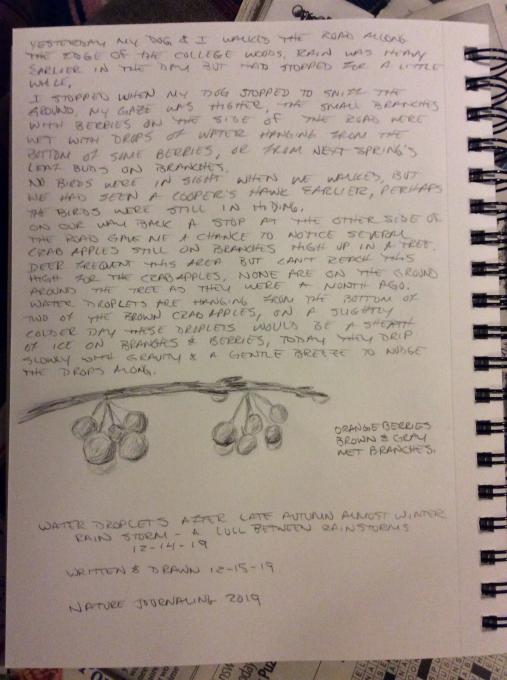The Cornell Lab Bird Academy › Discussion Groups › Nature Journaling and Field Sketching › The Power of Reflection
-
I did like Aldo Leopold. However, it is difficult to make a judgment for an extract of something. It would be good to read more to have a clearer sense of what the nature writer wants to share with the world. I have realised that I do not write a lot in my sketches. I tend to write the place and the time only, but more details could be helpful to be added in the future.
-
Annie Dillard is by far my favorite nature writer. Through her, I discovered the genre of creative non-fiction. She changed my view of nature through her discussion of abundance.
-
Some of my favorites not mentioned already- Claude Monet, John James Audubon, Henry David Thoreau, John Muir, Vincent Van Gogh, Georgia O’Keeffe, Susan Fenimore Cooper, Nathaniel Hawthorne, Ralph Waldo Emerson, & Sir David Attenborough. I find that I have similar perspectives with each of them and connect to the peacefulness, relaxation, and the wonders of exploring the natural world especially more in the time of Covid-19. Thank you to all of the fellow students who have shared suggestions, support, and insight throughout this course. Thanks Liz.
-
 I noticed a large insect flying over a trellis in my desert back yard while I sat on my patio. I was amazed that the dragonfly was of the same color. It thoughtfully posed for me as I took this photo. I am not sure I would have investigated what it was had it not been for this course. Noticing even the smallest things comes easier after being still in a sit spot. Terry Tempest Williams is one of my favorites. I am working my way her essays on national parks the The Hour of Land. The Hidden Life of Trees by Peter Wohlleben will make you walk through a forest with new insight and respect for the ancients that live there.
I noticed a large insect flying over a trellis in my desert back yard while I sat on my patio. I was amazed that the dragonfly was of the same color. It thoughtfully posed for me as I took this photo. I am not sure I would have investigated what it was had it not been for this course. Noticing even the smallest things comes easier after being still in a sit spot. Terry Tempest Williams is one of my favorites. I am working my way her essays on national parks the The Hour of Land. The Hidden Life of Trees by Peter Wohlleben will make you walk through a forest with new insight and respect for the ancients that live there. -
Here's my journal page from March 16. Liz had just taught us to look for our "Sit Spot"; our place to sit, sketch and make observations. However, it was too chilly to be outside as I noted, so I watched a Carolina Wren, my favorite bird, from my window, and made a few quick gesture sketches. These wrens have the most animated body language that changes their shape from sleek to puffy and fat as they hop, run and launch themselves into the air. I see them year round in Southern Illinois;
 they often build nests in the most inopportune spots, regardless of human activity. I wrote: "A wren, one of our pair who've made a nest in the wreath by to our front door, sitting on the crook (that holds) a lantern. He bobs and looks left, bobs and looks right, repeats then hops down to the birdbath. Again bob, tail up, tail down, bob, look look..."
Thanks to all my fellow students for their insights and lists of favorite nature writers and poets and shared journal pages. I'd like to add Hannah Hinchman, nature journalist extradinaire to our list, and Michale Pollan for his wonderful book, "The Botany of Desire", and artist Andy Goldsworthy who creates the most splendid ephemeral sculptures outdoors from twigs, rocks, leaves, sand and ice. His work can be experienced in the video, "Rivers and Tides, Andy Goldsworthy, Working with Time" from 2001. It's reassuring to know there are so many other nature lovers out there.
Kathy B.
they often build nests in the most inopportune spots, regardless of human activity. I wrote: "A wren, one of our pair who've made a nest in the wreath by to our front door, sitting on the crook (that holds) a lantern. He bobs and looks left, bobs and looks right, repeats then hops down to the birdbath. Again bob, tail up, tail down, bob, look look..."
Thanks to all my fellow students for their insights and lists of favorite nature writers and poets and shared journal pages. I'd like to add Hannah Hinchman, nature journalist extradinaire to our list, and Michale Pollan for his wonderful book, "The Botany of Desire", and artist Andy Goldsworthy who creates the most splendid ephemeral sculptures outdoors from twigs, rocks, leaves, sand and ice. His work can be experienced in the video, "Rivers and Tides, Andy Goldsworthy, Working with Time" from 2001. It's reassuring to know there are so many other nature lovers out there.
Kathy B. -
Thanks to my fellow students for your suggestions on nature writers that you enjoy. I had not heard of Mary Oliver before - I don’t read a lot of poetry, but will look for her work. I’ve enjoyed Peter Matthieson, Bill Bryson, Edward Abbey’s Desert Solitaire, and just finished Terry Tempest Williams’s The Hour of Land. I’d like to read more of her work. I have started journals many times before, but never with the intention of also connecting it to observing nature and actually illustrating it. My journals have tended to be about what I “do” not what I “feel” and I hope I can bring in more of the latter. One of the positives for me of having this coronavirus lockdown has been a chance to more intently observe the natural world around me. Lots of walks, hardly any driving, and really noticing the changing from late winter to early/mid spring. Also, to contemplate what changes seem to be happening all around us due to the “built world” and climate change. In the Chicago area, we’ve just experienced our wettest May on record and Lake Michigan and surrounding waterways are at all time highs. How will this affect our area going forward - both from a human standpoint and for our natural world? Will this time of “stay at home” have any longer term impact - maybe not on our environment, but perhaps on our attitudes towards it, so we appreciate and will fight harder to protect it? All things to continue to observe.
-
 I taught this text for over twenty years to high school juniors. As part of the assignments they were to keep their own journal by observing nature in their yards, on their walks with friends, on bike trips, and any other opportunity. It was usually done in the spring for two weeks, but once it was done in February. Though the students at first were a bit reluctant, most of them at the end of their experience said it was one of the most worthwhile things they had ever done. They had never noticed before what was around them. Now that I am retired I, too, notice what is around me every day in my yard, on my walk or bike trip. As the air clears all over the globe, due to Covid 19, I am grateful that Mother Earth can breathe again and that I have time to notice her beauty even just in my yard. I will draw and paint and record and feel soothed and refreshed and grateful.
I taught this text for over twenty years to high school juniors. As part of the assignments they were to keep their own journal by observing nature in their yards, on their walks with friends, on bike trips, and any other opportunity. It was usually done in the spring for two weeks, but once it was done in February. Though the students at first were a bit reluctant, most of them at the end of their experience said it was one of the most worthwhile things they had ever done. They had never noticed before what was around them. Now that I am retired I, too, notice what is around me every day in my yard, on my walk or bike trip. As the air clears all over the globe, due to Covid 19, I am grateful that Mother Earth can breathe again and that I have time to notice her beauty even just in my yard. I will draw and paint and record and feel soothed and refreshed and grateful. -
While I have read nature writers like Muir, Thoreau, and Darwin, I haven't read them recently enough to claim a favorite. I'll work on that! I just went to my toasty desert backyard to do some reflecting myself and found myself waxing a bit philosophical, comparing the needs and worries of a house finch to myself in the time of a pandemic. It was a helpful to sit overlooking nature and think beyond myself for a short while. I look forward to spending time with my nature journal on a more regular basis, observing, recording, and thinking. A quote from my journal, "In these uncertain, frightening, and divisive times in the midst of a pandemic, nature provides a bit of solace, some salve for the spirit." I'll make an effort to continue looking for the emotion support in nature and art!
-
I read Wendell Berry in college and loved his writing. He lived on a farm in Kentucky and since I live in Ohio, I felt we were neighbors. I hear a little traffic from the freeway but the house being built next door is silent and I am hearing birds in our wooded yard. Oops, someone's doing yardwork. It is supposed to rain hard later but now it is fairly quiet and cool, around 55 degrees outside. I really feel at home in the woods, especially being alone there. Looking forward to practicing my new drawing and watercoloring skills out in the field. There is a lake close to me that I look forward to painting soon, as the weather picks up.
-
When I was a little girl, we had this book on the table in the den at home - Audobon's Birds of North America.
 I spent hours looking through it over and over again. The paintings were so beautiful. It was a 'good' book, so I had to handle it with care. It was an inspiration to become an artist (something I'm not at all today). My mum was an inspiration to pay attention to nature, as she knew all the birds from their songs and all the wild flowers in mountains. When I moved to a new country a few years ago, one of the things that bothered me right away was that I didn't recognize the birds any more.
This course is my first real journal. I've started many but never stuck with it. This course has been a wonderful inspiration. Hopefully I will continue when it's over.
I spent hours looking through it over and over again. The paintings were so beautiful. It was a 'good' book, so I had to handle it with care. It was an inspiration to become an artist (something I'm not at all today). My mum was an inspiration to pay attention to nature, as she knew all the birds from their songs and all the wild flowers in mountains. When I moved to a new country a few years ago, one of the things that bothered me right away was that I didn't recognize the birds any more.
This course is my first real journal. I've started many but never stuck with it. This course has been a wonderful inspiration. Hopefully I will continue when it's over.
-
This is a text I wrote years ago but I think it suits well in this. I hope it does. "My first day of this year fieldwork for the Breeding Birds Atlas was a good one. I saw 35 species and around 100 individuals. I'll try to visit the places I choose not to visit last year. Methodology plays a huge role. Last year was very rainy during Spring, so I had to rush things a bit, like using the whole day length to accomplish it. Although the best hours to look for birds are the 2 hours after dawn. Even if I sleep 3 to 4 hours usually the night before!!! You need to sleep better!!! The Dawn choir still is fantastic. It's not real polyphony but a mix of counterpoint, polyphony and minimalistic music. A powerful wave that doesn't overwhelm our ears. Psycadelic sounds, Trance or House can't be compared. Birds don't like beat boxes (?) Their beat box is a drumming woodpecker."...
-
Oh how I love the morning chorus! Your description is marvelous. In our neighborhood most parts of a day, a flutter of sparrows populate a particularly dense hedge. Those birds debate or celebrate in their convention center with a raucous cacophony, but as I draw abreast the shrubs, they hush into silence. After I pass, they take up their discussions all over again. I can imagine their frozen poses re-animating just where they left off.
-
-
I’ll never forget the day I purchased my cork screw willow. It was just a twig in a pot. Every season I have watched it grow and twist some more. But now today just four years later what a surprise! We had torrential storms last night in East TN. Looking at my rain gauge I noted 5 inches of rain ! So I took a. Short walk around my property and spotted robins bathing in a puddle of water surrounding the cork screw willow. What a delightful scene to view on this blustery cool spring morning. Below is a quick sketch of the scene.

-
 Another page that explores nature but, this time, it is my nature that is being looked at.
Another page that explores nature but, this time, it is my nature that is being looked at. -
beautiful
-
Love that you are exploring your nature! Nice painting!
-
I love the storm clouds. Such a great metaphor for our times. Thank you.
-
This reminds me of a Joni Mitchell song which often comes to me when I walk to the top of the hill and see the clouds. We are getting more stern clouds now. The end of August reminds men that the times are changing as well as the seasons. This was a very evocative submission.
-
-
Mary Oliver is a dear and much favoured inspiration for me for the last several years. Her deep connection to the natural world always touches my heart. This is a painting from my backyard and some comments that came to me as I sat in the sun doing this work. I feel that the character of my journal is gradually emerging.

-
I love Mary Oliver, too. Thank you for the lovely reminder that she has much to say about our time spend in nature. This journal page is wonderful. I am keeping a photo of it for inspiration as I observe nature and connect with Oliver again.
-
-
I love many nature writers and many of them have been mentioned. I also have some nature poets that are wonderful. Here is a favorite poem by the great Mary Oliver. When I Am Among the Trees by Mary Oliver When I am among the trees, especially, the willows and the honey locust, equally the beech, the oaks and the pines, they give off such hints of gladness I would almost say that they save me, and daily. I am so distant from the hope of myself, in which I have goodness, and discernment, and never hurry through the world but walk slowly, and bow often. Around me the trees stir in their leaves and call out, “Stay awhile,” The light flows from their branches. And they call again, “It’s simple,” they say, “and you too have come into the world to do this, to go easy, to be filled with light, and to shine.”
-
My favorite nature metaphor is from a song called, "All I can do is write about it." The line is, ....."have you ever seen a she-gator protect her youngin', or fish in a river, swimming so free......have you ever seen the beauty of the hills of Carolina, or the sweetness of the grass in Tennessee." By Lynyrd Skynyrd. Some of the other nature metaphors I enjoy are, a song by John Lee Hooker, Blue Bird. Where he sings about the travels of a bluebird, in his opening lines. I reformatted a Skynyrd poem, into my own verse. ........."Have you ever seen an Orange Spider, spinning her webs, so skillfully. Have you ever seen a Hummingbird fly, so free and so free. Now see Spider and Bird dance and fly together, so gloriously." I like the fact that birds are the universal animal for states and stamps. Why ? Do all countries have a national bird ? Do all states, countries, and post offices use a bird for a stamp ? My favorite bird is an IBIS, because it has multiple sides/traits. Sort of comical, bold, fat, skinny, short, long, etc... Not pure boldness, (EAGLE) or humor. (TURKEY) A Funny Bird. A 'combo.'
-

 Here are two pages from my Nature Journal. I painted the outflow creek from Sagamore Lake, and wrote a reflection on how much that place means to me.
Here are two pages from my Nature Journal. I painted the outflow creek from Sagamore Lake, and wrote a reflection on how much that place means to me. -
Really lovely.
-
What an inspiration! Off to my backyard to observe my pond and stream. You have inspired me. Thank you.
-
-
Birds are the definition of freedom in the world, flying through the skys with out limits.

-
Very nice Quetzal! Sadly, our quarantine here in Boquete, Panama coincides with quetzal season so we only had a chance to see a nesting pair 0nce this year before we had to isolate. I have wondered if the birds aren't enjoying the privacy instead of the usual flurry of birdwatchers near their nests! I do hope that you've gotten to see these wonderful birds in person! Penny

-
-
Went out and visited the cottonwood from the scene I painted in February. Saw a buttercup and a Skwala. Reflected a bit on new life and the original social-distancer, John Muir, my favorite writer in nature.


-
I love the works of Edith Holden, Maria Sibylla Merian and Beatrix Potter. Also Emily Dickinson's poetry

-
My favorite nature writer is David Carroll-his books are a reverent and spiritual look at New England's turtles, wetlands and riparian habitats. His intimacy with the Blandings, Spotted and Wood turtles that he follows from Spring through Fall in Webster, NH is inspiring and fascinating. He knows each of the turtles by their carapace and knotches he has made on their tales. His deep love for the swamps, wet meadows, marshes and streams that he knows through many years of walking through them is an insight into wetland ecology so few of us have experienced. Bernd Heinrich is my other favorite nature writer. His book-Trees in My Forest- is an amazing forest ecology and natural history book. He writes about the forest on this property in Maine and its history and ecological changes through the years before and after he acquired the land. I learned so much about tree morphology, physiology and anatomy, and chemistry. I write nature prose and poetry. I have for over 20 years now. Being in the New England woods and mountains, watching birds and wildlife, observing plants and trees is a spiritual and inspiring experience for me. It makes it so easy for me to write and reflect on the amazing beauty and diversity of the Earth.
-


-
I like Thoreau, Bill Bryson, John Krakauer, and Edith Holden. Thoreau expresses how I feel in nature: Bryson adds a touch of humor and reminds us to laugh at our mistakes out in nature: Krakauer is a great journalist about man in nature and reminds us that while we can laugh at our mistakes, some mistakes are fatal: and Holden's journals from 1906 are exquisite in their artistry and prose.
-
 This is from my very first entry--a drawing of my ultimate "journaling hero," Charles Darwin. I'm more of a writer than an artist but am fascinated by the interconnections among the artist (whether visual or verbal) and scientist and in the salience of all their observations and reflections (Darwin's fighting words). So! You can imagine how delighted I was by Liz's selection of texts, from some of my all-time favorite observers and reflectors. I was unfamiliar with Kimmeler and Heinrich, so am glad to be introduced to them. Thank you!
This is from my very first entry--a drawing of my ultimate "journaling hero," Charles Darwin. I'm more of a writer than an artist but am fascinated by the interconnections among the artist (whether visual or verbal) and scientist and in the salience of all their observations and reflections (Darwin's fighting words). So! You can imagine how delighted I was by Liz's selection of texts, from some of my all-time favorite observers and reflectors. I was unfamiliar with Kimmeler and Heinrich, so am glad to be introduced to them. Thank you! -
I have been writing for a while adding drawings brings a new dimension to my journaling.

Read More:
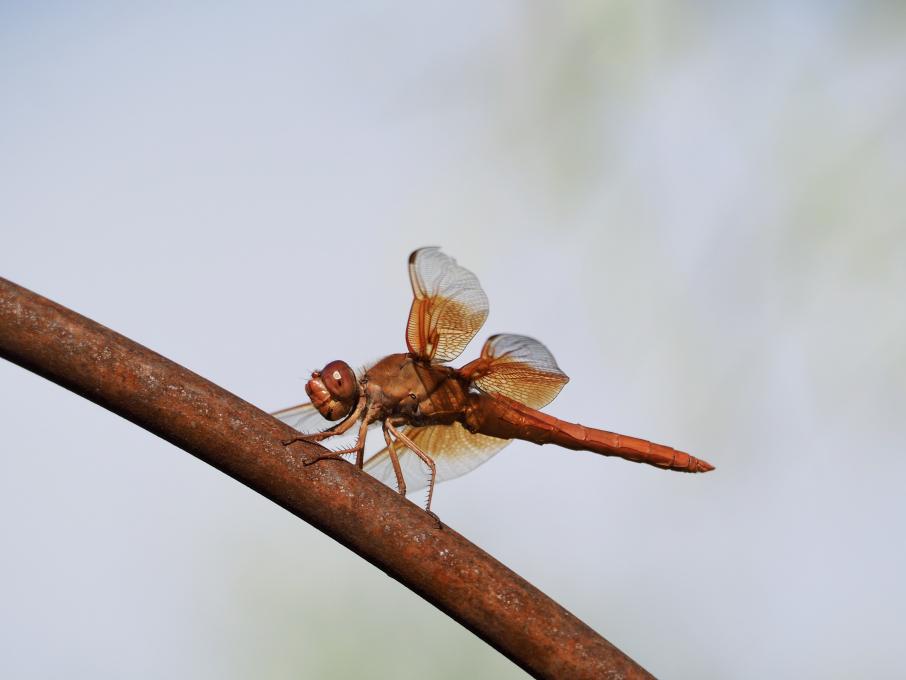 I noticed a large insect flying over a trellis in my desert back yard while I sat on my patio. I was amazed that the dragonfly was of the same color. It thoughtfully posed for me as I took this photo. I am not sure I would have investigated what it was had it not been for this course. Noticing even the smallest things comes easier after being still in a sit spot. Terry Tempest Williams is one of my favorites. I am working my way her essays on national parks the The Hour of Land. The Hidden Life of Trees by Peter Wohlleben will make you walk through a forest with new insight and respect for the ancients that live there.
I noticed a large insect flying over a trellis in my desert back yard while I sat on my patio. I was amazed that the dragonfly was of the same color. It thoughtfully posed for me as I took this photo. I am not sure I would have investigated what it was had it not been for this course. Noticing even the smallest things comes easier after being still in a sit spot. Terry Tempest Williams is one of my favorites. I am working my way her essays on national parks the The Hour of Land. The Hidden Life of Trees by Peter Wohlleben will make you walk through a forest with new insight and respect for the ancients that live there.  they often build nests in the most inopportune spots, regardless of human activity. I wrote: "A wren, one of our pair who've made a nest in the wreath by to our front door, sitting on the crook (that holds) a lantern. He bobs and looks left, bobs and looks right, repeats then hops down to the birdbath. Again bob, tail up, tail down, bob, look look..."
Thanks to all my fellow students for their insights and lists of favorite nature writers and poets and shared journal pages. I'd like to add Hannah Hinchman, nature journalist extradinaire to our list, and Michale Pollan for his wonderful book, "The Botany of Desire", and artist Andy Goldsworthy who creates the most splendid ephemeral sculptures outdoors from twigs, rocks, leaves, sand and ice. His work can be experienced in the video, "Rivers and Tides, Andy Goldsworthy, Working with Time" from 2001. It's reassuring to know there are so many other nature lovers out there.
Kathy B.
they often build nests in the most inopportune spots, regardless of human activity. I wrote: "A wren, one of our pair who've made a nest in the wreath by to our front door, sitting on the crook (that holds) a lantern. He bobs and looks left, bobs and looks right, repeats then hops down to the birdbath. Again bob, tail up, tail down, bob, look look..."
Thanks to all my fellow students for their insights and lists of favorite nature writers and poets and shared journal pages. I'd like to add Hannah Hinchman, nature journalist extradinaire to our list, and Michale Pollan for his wonderful book, "The Botany of Desire", and artist Andy Goldsworthy who creates the most splendid ephemeral sculptures outdoors from twigs, rocks, leaves, sand and ice. His work can be experienced in the video, "Rivers and Tides, Andy Goldsworthy, Working with Time" from 2001. It's reassuring to know there are so many other nature lovers out there.
Kathy B. 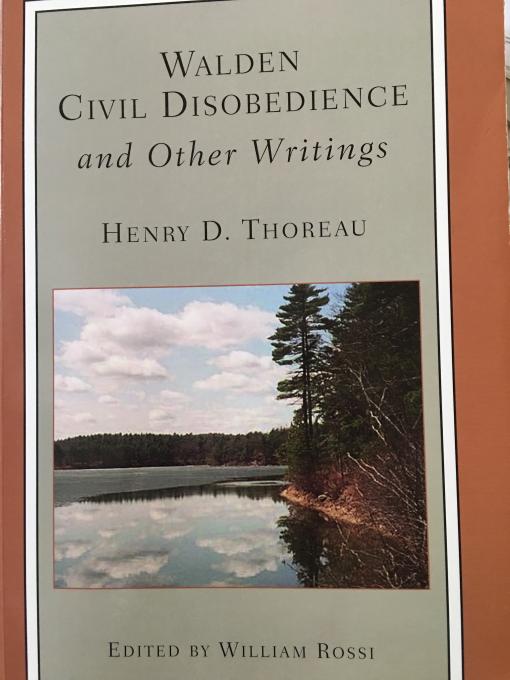 I taught this text for over twenty years to high school juniors. As part of the assignments they were to keep their own journal by observing nature in their yards, on their walks with friends, on bike trips, and any other opportunity. It was usually done in the spring for two weeks, but once it was done in February. Though the students at first were a bit reluctant, most of them at the end of their experience said it was one of the most worthwhile things they had ever done. They had never noticed before what was around them. Now that I am retired I, too, notice what is around me every day in my yard, on my walk or bike trip. As the air clears all over the globe, due to Covid 19, I am grateful that Mother Earth can breathe again and that I have time to notice her beauty even just in my yard. I will draw and paint and record and feel soothed and refreshed and grateful.
I taught this text for over twenty years to high school juniors. As part of the assignments they were to keep their own journal by observing nature in their yards, on their walks with friends, on bike trips, and any other opportunity. It was usually done in the spring for two weeks, but once it was done in February. Though the students at first were a bit reluctant, most of them at the end of their experience said it was one of the most worthwhile things they had ever done. They had never noticed before what was around them. Now that I am retired I, too, notice what is around me every day in my yard, on my walk or bike trip. As the air clears all over the globe, due to Covid 19, I am grateful that Mother Earth can breathe again and that I have time to notice her beauty even just in my yard. I will draw and paint and record and feel soothed and refreshed and grateful. 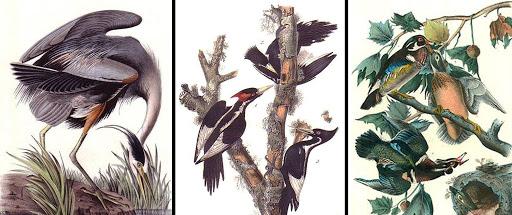 I spent hours looking through it over and over again. The paintings were so beautiful. It was a 'good' book, so I had to handle it with care. It was an inspiration to become an artist (something I'm not at all today). My mum was an inspiration to pay attention to nature, as she knew all the birds from their songs and all the wild flowers in mountains. When I moved to a new country a few years ago, one of the things that bothered me right away was that I didn't recognize the birds any more.
This course is my first real journal. I've started many but never stuck with it. This course has been a wonderful inspiration. Hopefully I will continue when it's over.
I spent hours looking through it over and over again. The paintings were so beautiful. It was a 'good' book, so I had to handle it with care. It was an inspiration to become an artist (something I'm not at all today). My mum was an inspiration to pay attention to nature, as she knew all the birds from their songs and all the wild flowers in mountains. When I moved to a new country a few years ago, one of the things that bothered me right away was that I didn't recognize the birds any more.
This course is my first real journal. I've started many but never stuck with it. This course has been a wonderful inspiration. Hopefully I will continue when it's over.

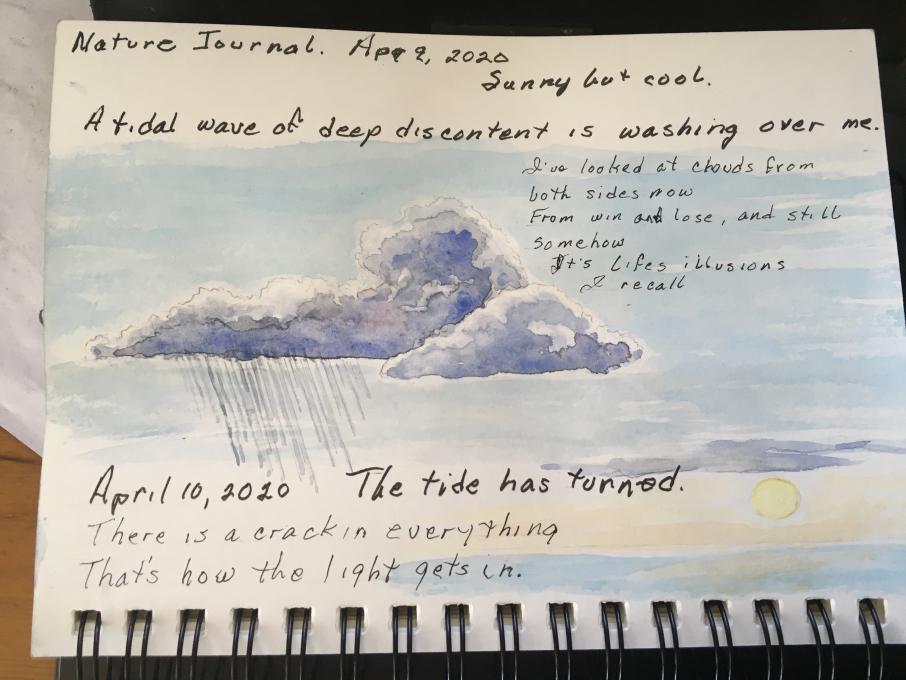 Another page that explores nature but, this time, it is my nature that is being looked at.
Another page that explores nature but, this time, it is my nature that is being looked at. 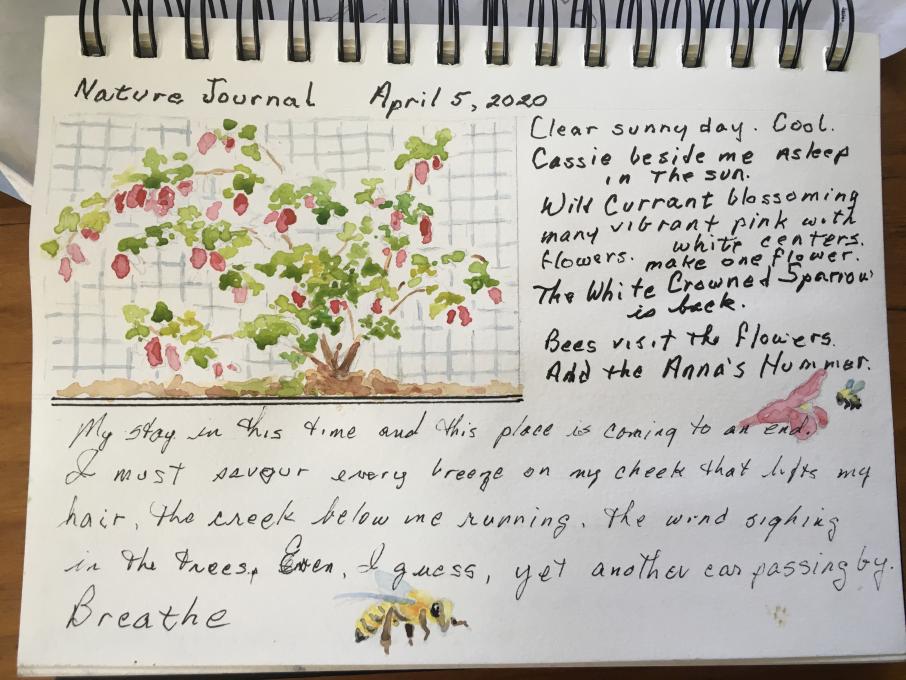

 Here are two pages from my Nature Journal. I painted the outflow creek from Sagamore Lake, and wrote a reflection on how much that place means to me.
Here are two pages from my Nature Journal. I painted the outflow creek from Sagamore Lake, and wrote a reflection on how much that place means to me. 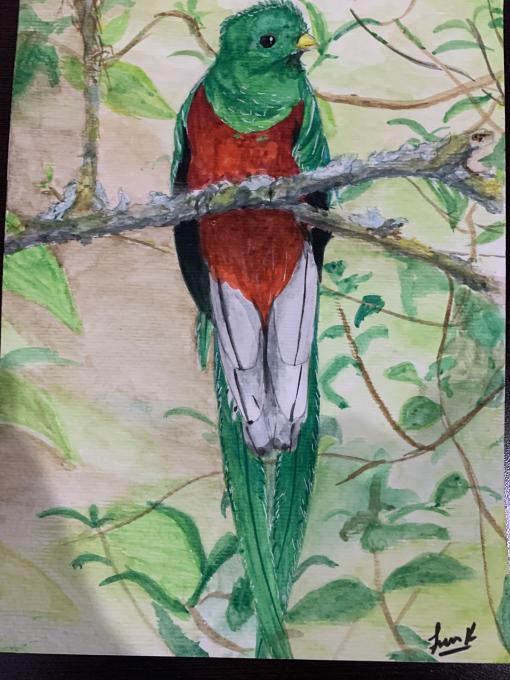

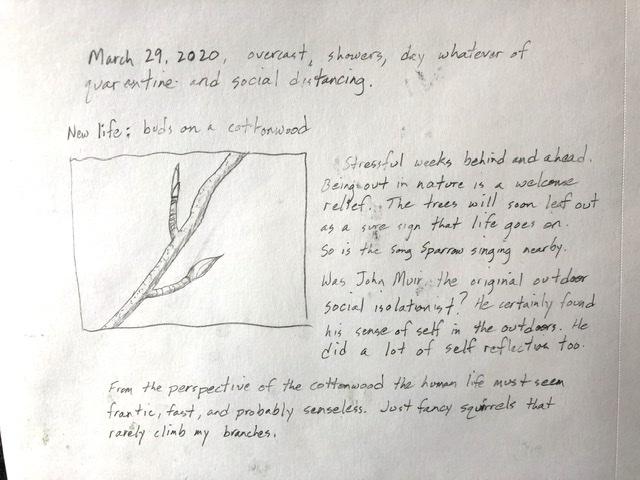
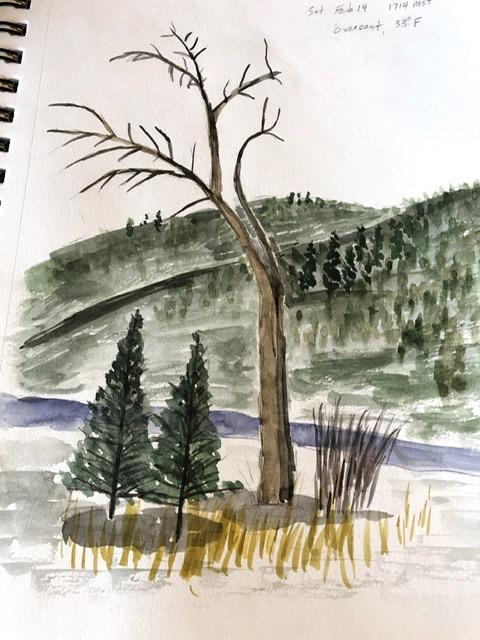
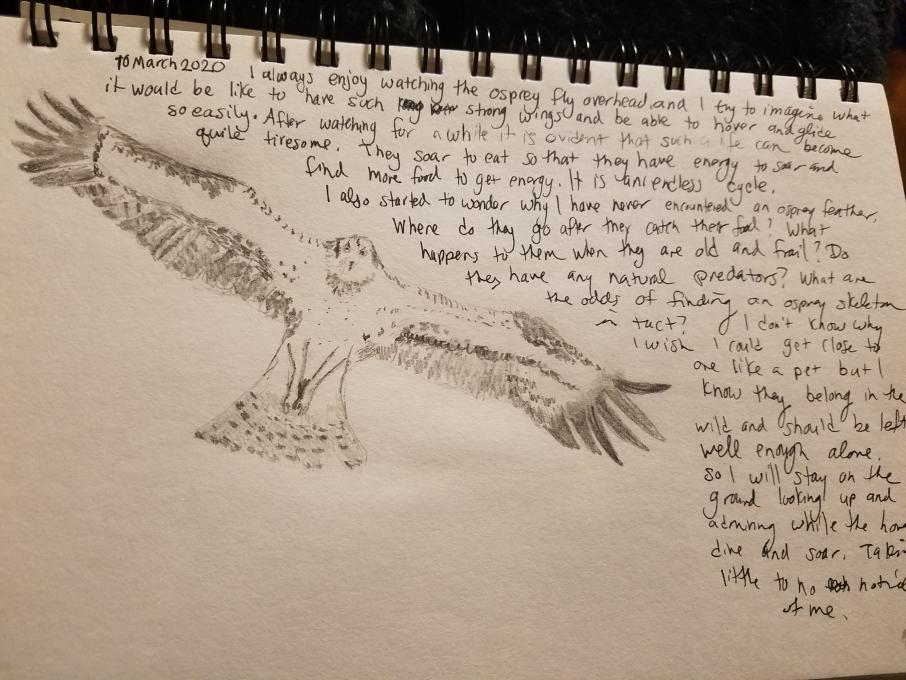
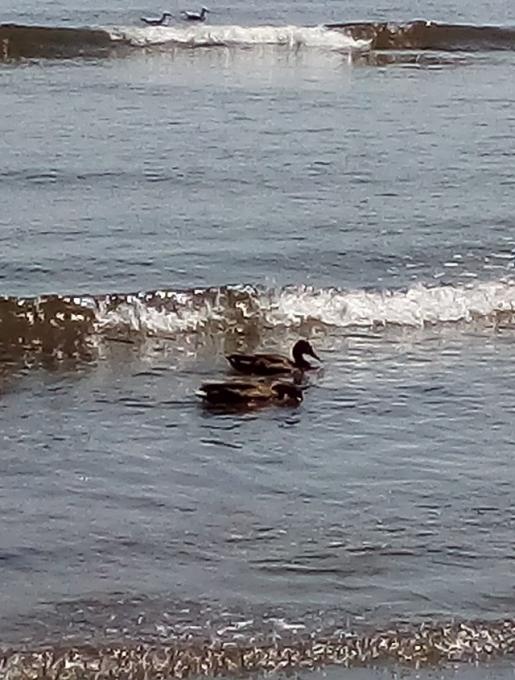

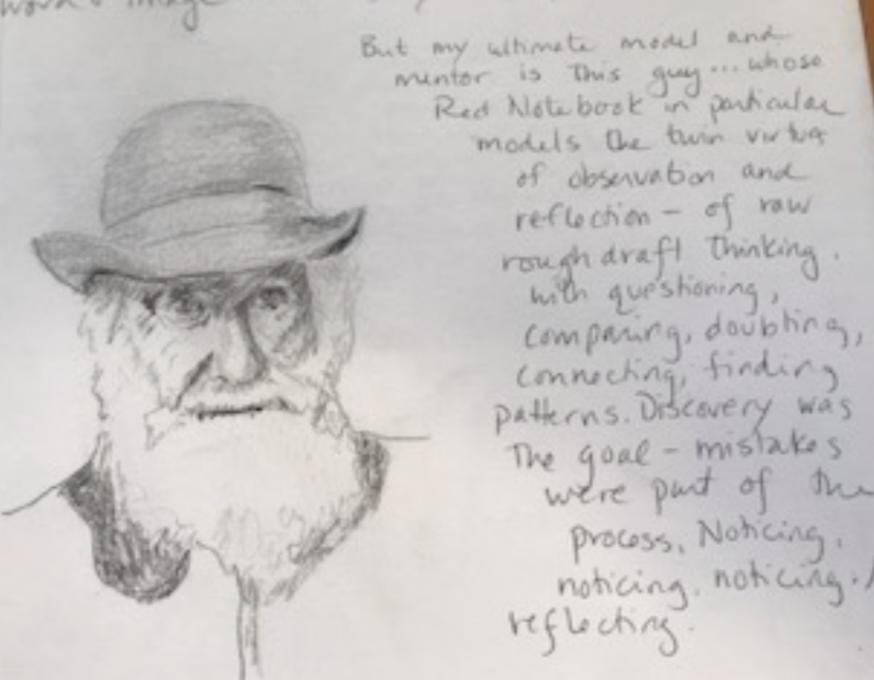 This is from my very first entry--a drawing of my ultimate "journaling hero," Charles Darwin. I'm more of a writer than an artist but am fascinated by the interconnections among the artist (whether visual or verbal) and scientist and in the salience of all their observations and reflections (Darwin's fighting words). So! You can imagine how delighted I was by Liz's selection of texts, from some of my all-time favorite observers and reflectors. I was unfamiliar with Kimmeler and Heinrich, so am glad to be introduced to them. Thank you!
This is from my very first entry--a drawing of my ultimate "journaling hero," Charles Darwin. I'm more of a writer than an artist but am fascinated by the interconnections among the artist (whether visual or verbal) and scientist and in the salience of all their observations and reflections (Darwin's fighting words). So! You can imagine how delighted I was by Liz's selection of texts, from some of my all-time favorite observers and reflectors. I was unfamiliar with Kimmeler and Heinrich, so am glad to be introduced to them. Thank you! 